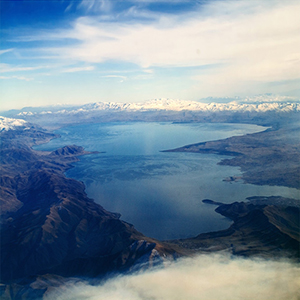Lake-wide assessment of trace elements in surface sediments and water of Lake Sevan

Submitted: 4 October 2022
Accepted: 17 April 2023
Published: 10 May 2023
Accepted: 17 April 2023
Abstract Views: 783
PDF: 273
Supplementary: 44
HTML: 7
Supplementary: 44
HTML: 7
Publisher's note
All claims expressed in this article are solely those of the authors and do not necessarily represent those of their affiliated organizations, or those of the publisher, the editors and the reviewers. Any product that may be evaluated in this article or claim that may be made by its manufacturer is not guaranteed or endorsed by the publisher.
All claims expressed in this article are solely those of the authors and do not necessarily represent those of their affiliated organizations, or those of the publisher, the editors and the reviewers. Any product that may be evaluated in this article or claim that may be made by its manufacturer is not guaranteed or endorsed by the publisher.
Similar Articles
- Enlou Zhang, Yanmin Cao, Peter Langdon, Qian Wang, Ji Shen, Xiangdong Yang, Within-lake variability of subfossil chironomid assemblage in a large, deep subtropical lake (Lugu lake, southwest China) , Journal of Limnology: Vol. 72 No. 1 (2013)
- Jasmijn van 't Hoff, Tabea Schröder, Peter Held, Stephan Opitz, Bernd Wagner, Klaus Reicherter, Martin Melles, Modern sedimentation processes in Laguna de Medina, southern Spain, derived from lake surface sediment and catchment soil samples , Journal of Limnology: Vol. 76 No. 1 (2017)
- Mircea Alexe, Gheorghe Șerban, Andreea Baricz, Adrian-Ștefan Andrei, Adorján Cristea, Karina P. Battes, Mirela Cîmpean, Laura Momeu, Vasile Muntean, Sebastian A. Porav, Horia L. Banciu, Limnology and plankton diversity of salt lakes from Transylvanian Basin (Romania): A review , Journal of Limnology: Vol. 77 No. 1 (2018)
- Renata Tandyrak, Iwona Gołaś, Katarzyna Parszuto, Magdalena Bowszys, Daniel Szymański, Monika Harnisz, Andrzej Brudniak, Izabela Wysocka, The effect of lake restoration by the hypolimnetic withdrawal method on the intensity of ambient odour , Journal of Limnology: Vol. 75 No. 3 (2016)
- Fabien Bourinet, Orlane Anneville, Hilaire Drouineau, Chloé Goulon, Jean Guillard, Alexandre Richard, Synchrony in whitefish stock dynamics: disentangling the effects of local drivers and climate , Journal of Limnology: Vol. 82 (2023)
- Stefan Weinberger, Mark Vetter, Lake heat content and stability variation due to climate change: coupled regional climate model (REMO)-lake model (DYRESM) analysis , Journal of Limnology: Vol. 73 No. 1 (2014)
- . Issa, Festus Aka Tongwa, Alfred G. Mouliom, Dmitri Rouwet, Wilson Y. Fantong, Boris Chako Tchamabé, Takeshi Ohba, Yutaka Yoshida, Daniel Sighomnou, Nkamdjou Sigha, Minoru Kusakabe, δ18O and δD variations in some volcanic lakes on the Cameroon Volcanic Line (West-Africa): generating isotopic baseline data for volcano monitoring and surveillance in Cameroon , Journal of Limnology: Vol. 74 No. 1 (2015)
- Long Ma, Jinglu Wu, Wen Liu, Jilili Abuduwaili, Distinguishing between anthropogenic and climatic impacts on lake size: a modeling approach using data from Ebinur Lake in arid northwest China , Journal of Limnology: Vol. 73 No. 2 (2014)
- Angela Boggero, Lyudmila Kamburska, Silvia Zaupa, Marzia Ciampittiello, Michela Rogora, Tiziana Di Lorenzo, Synoptic results on the potential impacts of the Lake Maggiore water management strategy on freshwater littoral ecosystems and invertebrate biocoenosis (NW, Italy) , Journal of Limnology: Vol. 81 No. s2 (2022): Effects of water level management on lake littorals and downstream river areas
- Shuchun Yao, Bin Xue, Sediment records of the metal pollution at Chihu Lake near a copper mine at the middle Yangtze River in China , Journal of Limnology: Vol. 75 No. 1 (2016)
<< < 1 2 3 4 5 6 7 8 9 10 > >>
You may also start an advanced similarity search for this article.

 https://doi.org/10.4081/jlimnol.2022.2096
https://doi.org/10.4081/jlimnol.2022.2096






